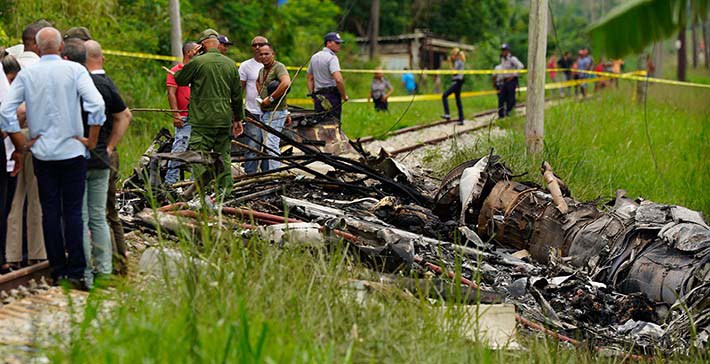
The plane, the pilot, the boxes, and the parts found
HAVANA – Human error? Technical-mechanical failures? Both are possible, and they’ve both been present in the history of aviation. However, in the case of the Boeing 737-200 that crashed on May 18 in Havana, there are several elements to ponder:
1 – The one suggested by some — there was even a simulator published on social networks — that the turn of the plane could have been due to a decision by the plane’s captain who noticed serious mechanical failures. If this is the case, there should be a record, both in the black voice box and in the recording of the captain’s communications with the control tower, warning of his decision brought about by mechanical failures. He was avoiding a disaster of greater magnitude, because a scant 300 meters from where the plane fell, there are houses and buildings. We can therefore refer to it as heroism by the captain.
2 – The second black box, which is really of the color red, in addition to what the other parts already collected and preserved by the authorities show us, could reveal mechanical failures, corroborating, or not, the possible alert communicated by the pilot to the tower and explaining the causes of the spin and total collapse of the plane.
3 – The recovered pieces speak a language that the experts understand. Fortunately our technicians, like their foreign colleagues from Mexico and the United States, all highly qualified, understand the language of these damaged metals. Parts that can help explain the causes, and confirm, or not, the two previous points.
To say that the “only objective of the investigation [of the Commission] is the prevention of future events or events (…)”, is restrictive. Certainly, the Commission is not a court, but it does lead the specialized team that conducts the investigation and must issue its conclusions on the causes and conditions of the dramatic disaster.
All accidents, especially serious ones, whether on roads, sea or air, are subject to the investigation of competent authorities to determine the causes that originated it and identify responsibilities.
All research done in the scientific-technical field in which it operates has a work order whose culmination may be to prevent (task of dissemination and alert), but as a result of the causes of origin.
Let us make it clear (and for example): Cuba’s Carlos J. Finlay, discoverer of the transmitting agent of yellow fever, did not start by preventing the transmitting mosquito, because he was not aware what it was when he started. His was the end of a process that defined responsibilities (water accumulation, etc.) that facilitated the transmission of the disease.
Prevention is important, but responsibilities must be identified with total clarity and transparency, and from there move on to the corresponding ground and consequences.

